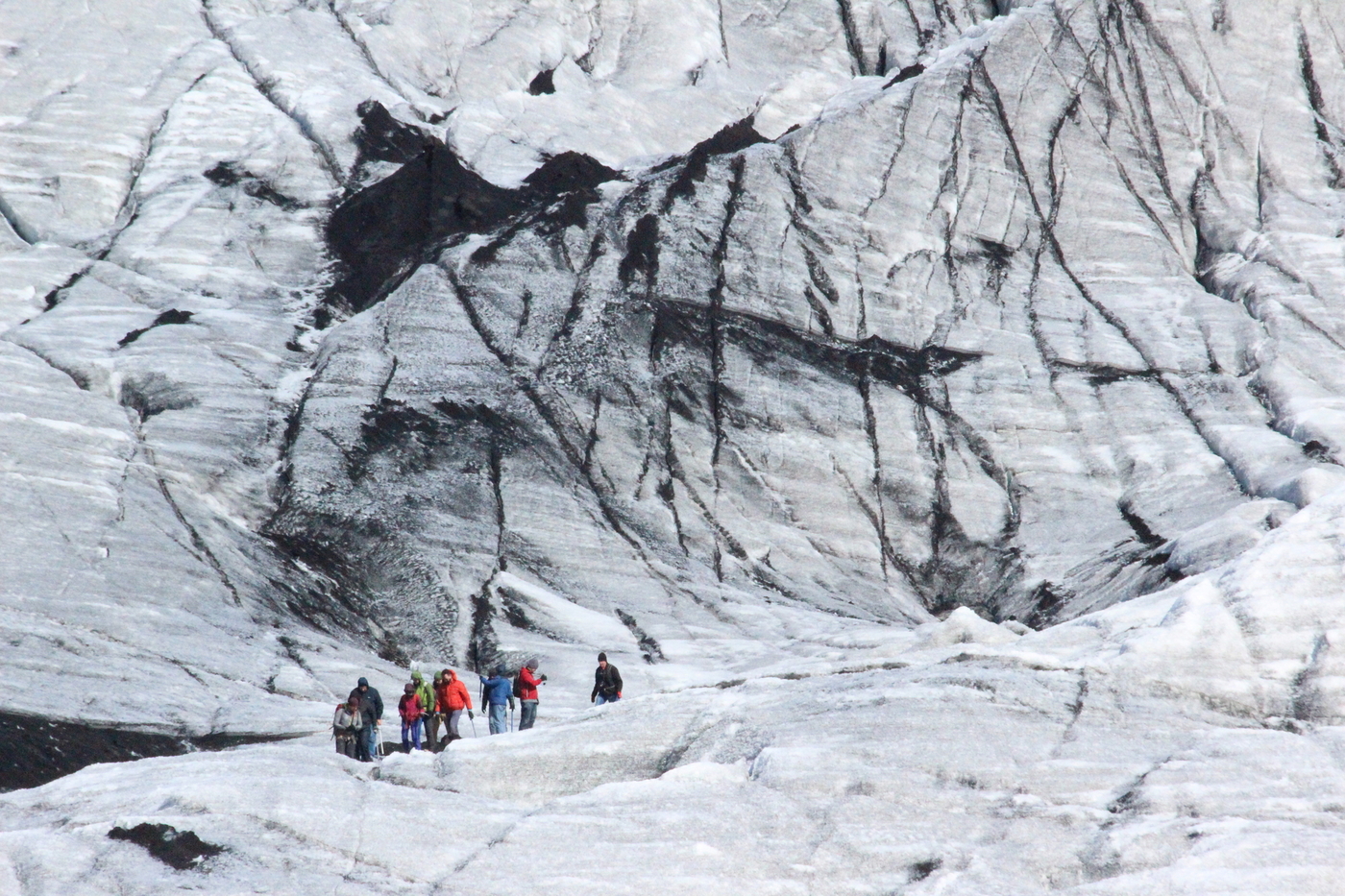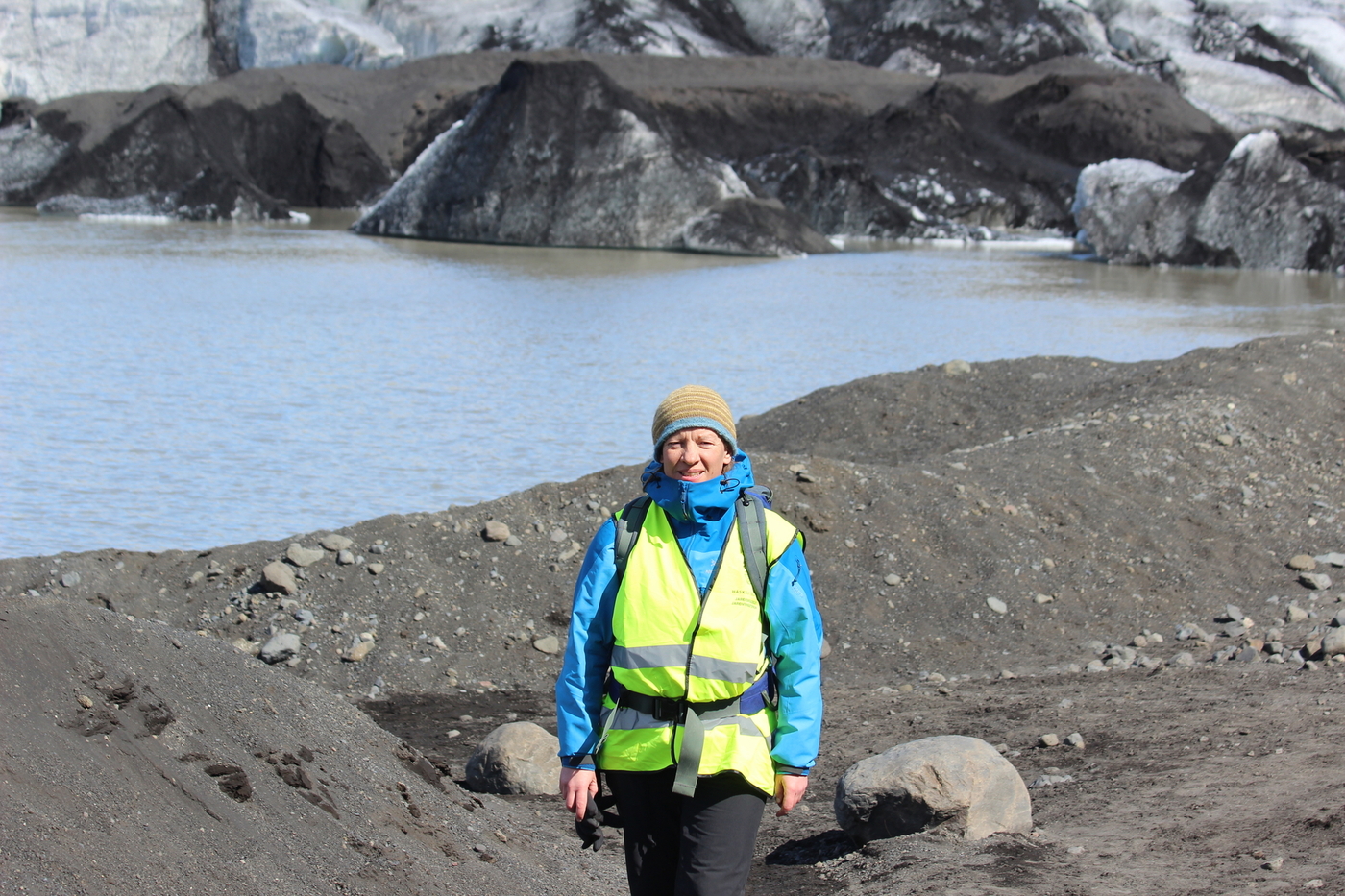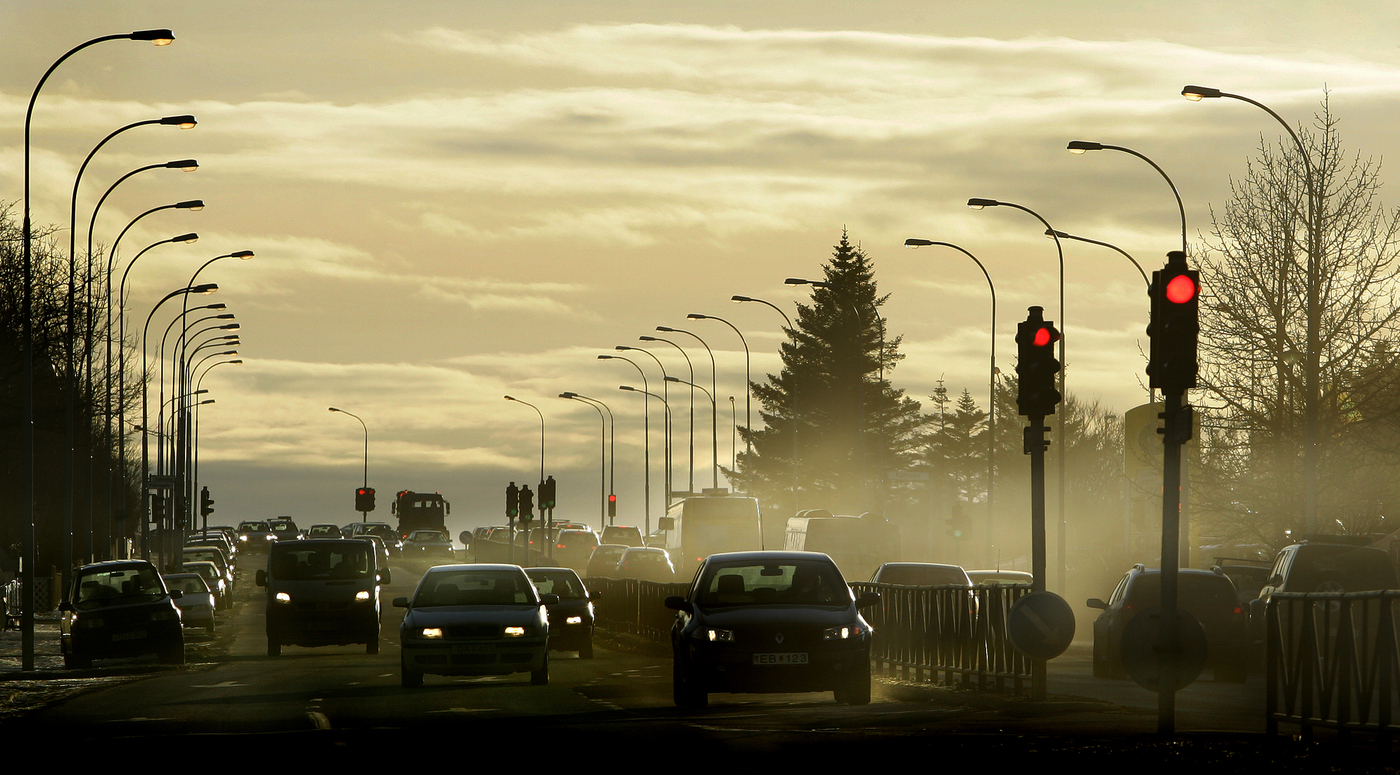"A lot of changes have already happened, and those changes will intensify for as long as we continue to pump greenhouse gases into the atmosphere. The concentration of carbon dioxide in the atmosphere is now at the highest point in at least the past 2 million years. The scale of warming is in direct proportion to accumulated emissions of carbon dioxide. The planet is already 1.1 degree warmer compared to the period 1850 to 1900, and this warming is two times greater in the northern hemisphere."
So says Guðfinna Aðalgeirsdóttir, professor of glaciology at the University of Iceland. She is one of the authors behind Chapter 9 of the United Nations climate report that has been discussed in the media and by specialists across the world since it was released earlier this year. The chapter to which Guðfinna contributed is entitled Ocean, cryosphere and sea level change.
Guðfinna, whose research in recent years has focused on glacial retreat, explains that there is widespread evidence of changes caused by catastrophic warming. Sea levels are rising faster than at any point in the last 3,000 years, the extent of sea ice in the Arctic Ocean is at a low point for at least the last thousand years, and glaciers are now retreating faster than at any point during the last 2,000 years.
"Warming leads to serious changes," explains Guðfinna, "storms become more intense and extreme climate events become more common and have more serious consequences. These climate events include heatwaves and droughts but also extreme rain and conditions that lead to forest fires and wildfires. Other issues include the acidification of the oceans, snow cover becoming thinner and shorter lasting, the retreat of permafrost in mountainous regions, glacial retreat, more extreme precipitation, and the fact that winter rain instead of snow increases the likelihood of avalanches and landslides."
Guðfinna says that other chapters of the report look at the atmosphere, carbon dioxide and other greenhouse gases, human impact on weather systems, and many other areas. "There are twelve chapters in the report and it also includes a special database which compiles all the data on which the report is based. I recommend taking a look at it. You can select a specific region and look at how things like temperature, precipitation or droughts have changed over recent decades. It also includes projections for the future."

To stop global warming, we must stop carbon dioxide emissions
The section of the report on which Guðfinna worked had 18 primary authors, 3 of whom also had roles managing the work and maintaining the correct focus. Guðfinna explains that specialists were also recruited to work on sub-sections where the team lacked expertise. "In total, 234 primary authors from 65 different countries contributed to the first part of three in the sixth Assessment Report from the UN Intergovernmental Panel on Climate Change. The second and third parts will be issued in February and March 2022 and will cover the social and economic impact of climate change and potential actions to counter climate change. The extent of future changes is highly dependent on the volume of greenhouse gas emissions over the next decades," says Guðfinna. "This means that to stop global warming, we must stop carbon dioxide emissions, as well as reduce emissions of other greenhouse gases. Without far-reaching and immediate action to reduce greenhouse gas emissions, the average global temperature will rise by more than 1.5 degrees, possibly even 2 degrees, this century. This would have a profound impact in all the areas I have mentioned and more."
Just over a third of the authors are women and two thirds are men, and around a third of the authors had not previously worked for the Intergovernmental Panel on Climate Change. Guðfinna says that the authors come from all over the world and efforts were made to maximise diversity within the team, which added an interesting dimension to the work. "It was really interesting to write about the science and the state of knowledge, but it was also fascinating to take part in such a multinational, vital and wide-ranging project."
"It was a bit like being on an Olympic sports team – a lot of scientists that I've followed in recent years were also involved and I met a lot of people that I would be interested in working with in the future."

Some of the work was completed remotely
Guðfinna explains that working on the report gave her a deeper understanding of the importance of this issue and how it affects every one of us on the planet. "All the authors took the project extremely seriously and the team put a great deal of effort into making the material as accessible as possible. All our conversations in meetings were very interesting and it was brilliant to make connections with leading scientists in this field. There were also smaller teams working across different chapters who wrote short sections to answer frequently asked questions and produced summaries, both technical summaries and summaries for policy makers."
Guðfinna explains the the pandemic had a significant impact on the writing process. The last meeting, which was supposed to be a chance for all authors to meet in person, instead took place online. "It became clear how important it is to know and understand the people you're working with and to do that, you need to meet. Although we have also learned that it is possible to meet online and solve most of the issues that needed solving, the fact that we already knew each other made that easier than it would have been if we had only ever met online."
Guðfinna says that being restricted to online communication meant that some decisions took longer, but the writing team agreed that there were positives in this because it meant that people who speak softly or need more time to think could also get their points across at their own speed and influence the decision making process. "I became a lot better at holding online meetings, I gained a lot of self-confidence and I proved to myself that I was capable of writing this report, even though at the start of the project I wasn't sure it would be possible."
Guðfinna is now working with the glaciology team at the University's Institute of Earth Sciences on a number of glaciology projects. "We are continuing to measure the status and movements of glaciers each year, using both direct surface measurements and satellite measurements. We use modelling to generate projections for the future of glaciers in certain scenarios, the scenarios we used for the UN climate report.

A compilation of almost all the world's knowledge
The process of writing a report that is so vital for the environment and all life on Earth is long and complicated. The work began with a meeting of all authors in the summer of 2018, "We met and got to know the people we would be working with for the next three years. At that point, the skeleton of the report was already complete and we used that as we started our work. The authors aren't doing original research, but summarising everything that has been published and evaluating the state of knowledge in various different fields. Well-defined terminology is used to explain the level of certainty for each area and the likelihood of specific occurrences, for example warming or rising sea levels."
The report went through several drafts, the first of which was reviewed by scientists in 2019. The second draft was reviewed in 2020, at which point input was welcomed from policy makers as well as scientists. "Our chapter received more than 5,700 comments and the report as a whole over 50,000 comments that we needed to consider and respond to. Inviting comments worked very well to ensure that everyone with expertise in the relevant topics was able to stay informed about the project and help to make the report as good as it could possibly be. My writing team met weekly as we were writing the final version last winter. We divided up tasks, read all the latest scientific papers that had been published since the last report was written, and did our best to summarise the state of knowledge."
Guðfinna and the glaciologist Lucas Riaz from Argentina wrote the section about all the world's glaciers, except the major ice sheets over Greenland and the Antarctic, and were in contact with everyone who was publishing new research that might be relevant. "It was a lot of fun to be talking to scientists all over the world, hearing the latest findings, and we hoped they would be published in time since we could only use published peer-reviewed papers in the report. I also wrote part of the section on changes to the Greenland ice sheet over recent decades and modelling of the future of glaciers in certain scenarios, which was then used to inform projections of future sea level changes."

We need far-reaching and immediate action
Although the climate report is now finished, Guðfinna is certainly not resting on her laurels. She is now working with the glaciology team at the University's Institute of Earth Sciences on a number of glaciology projects.
"We are continuing to measure the status and movements of glaciers each year, using both direct surface measurements and satellite measurements. We use modelling to generate projections for the future of glaciers in certain scenarios, the scenarios we used for the UN climate report. We work together on many of these projects with the National Power Company, the Icelandic Met Office, the National Land Survey of Iceland, and the Road and Coastal Administration, as well as international partners."
Guðfinna was very clear on what we need to do to respond to the predicted climate changes described in the report.
"We need far-reaching and immediate action to reduce greenhouse gas emissions. Since warming is directly linked to the concentration of carbon dioxide in the atmosphere, we need to do everything we can to reduce that. Already there is a lot of new technology and solutions designed to tackle this issue. One of the keys to solving the problem is changing consumer habits so that we use less energy and cleaner energy in all aspects of our day-to-day lives. It is also important to reduce waste and make better use of everything we produce. We need to stop producing things just to throw them away. All the changes that need to happen if we are to reduce greenhouse gas emissions are positive for the planet and societies across the world. They will lead to better air quality and halt the warming."




